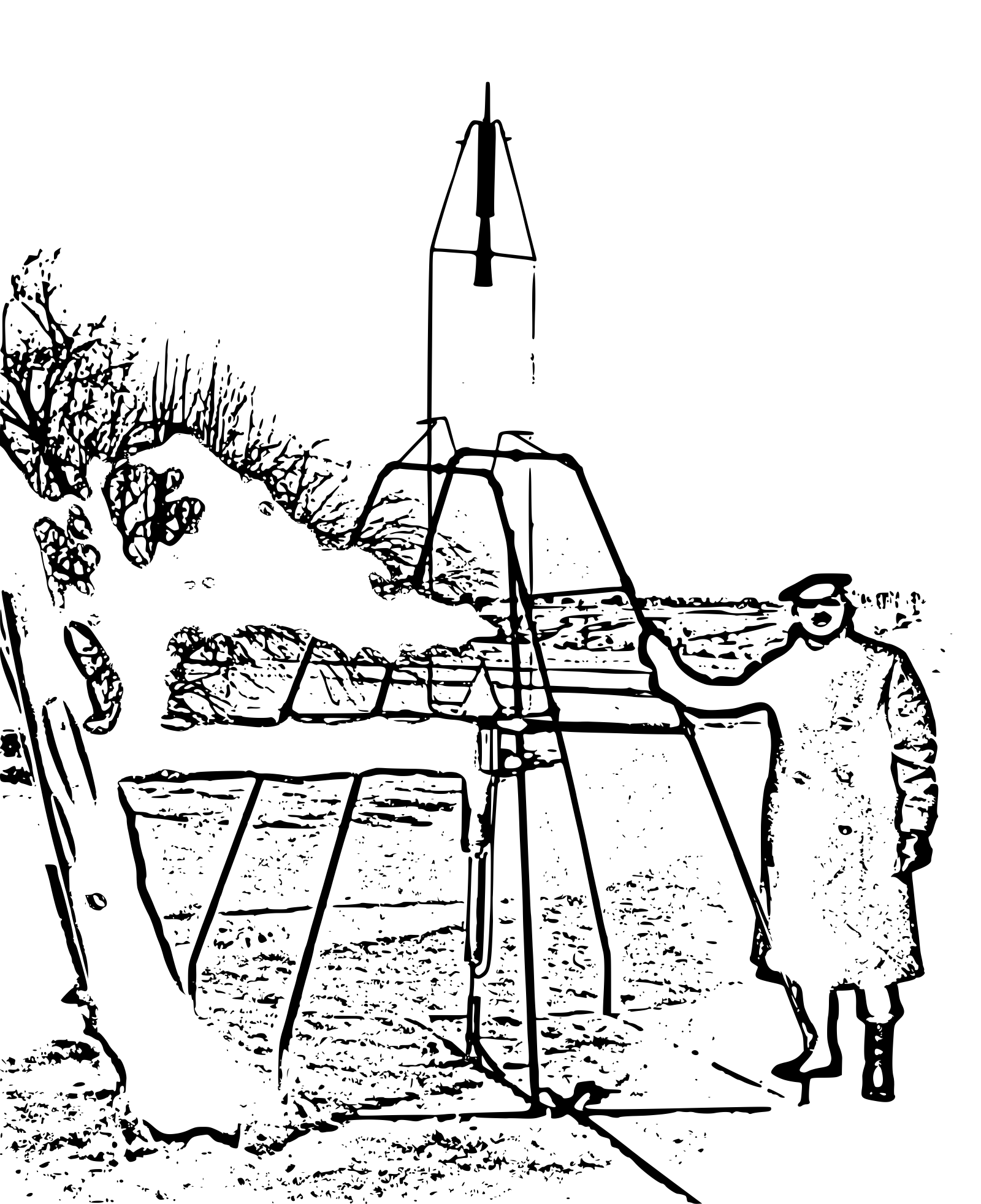Other Firsts: Robert Goddard's First Liquid-Fueled Rocket
Building Foundations
"...it has often proved true that the dream of yesterday is the hope of today, and the reality of tomorrow."
- Robert Goddard, at his high school graduation, 1904
Robert Goddard recalled that at age 17, "... I climbed a tall cherry tree and ...[*]"... armed with a saw which I still have, and a hatchet..." started to trim the dead limbs from the cherry tree. It was one of the quiet, colorful afternoons of sheer beauty which we have in October in New England, and as I looked towards the fields at the east, I imagined how wonderful it would be to make some device which had even the possibility of ascending to Mars. I was a different boy when I descended the tree from when I ascended, for existence at last seemed very purposive." He celebrated his "anniversary day" of this experience for years afterwards, as he studied rockets in pursuit of his dream.
Rockets were probably invented around the year 1000 by the Chinese as a way to enhance their fireworks displays. Later they were used in war, but they were hard to control, so many people saw rockets as just a toy - except for dreamers like Konstantin Tsiolkovsky and Robert Goddard.
Goddard didn't just dream and theorize. As a college student, he worked on a rocket powered by gunpowder in the basement of the physics building. Trying that today would get you in a lot of trouble; but his teachers became interested in his work.
He continued his experiments as an assistant professor, increasing the efficiency of rockets from around 2% up to 63%[*]inspired by a steam engine design by Gustav De Laval, and finding that a rocket still produces thrust in the vacuum of space.
Goddard paid his own money for his early rocket experiments, and shied away from the spotlight. Later, he got a $5000 grant from the Smithsonian Institution; some of his colleagues didn't think rocketry research deserved such a "large" amount of funding.
The Smithsonian encouraged him to publish what he'd learned; he invited them to publish his original grant proposal, with slight edits. After the New York Times reported on it, they made fun of him, writing "That professor Goddard, with his 'chair' in Clark College and the countenancing of the Smithsonian Institution, does not know the relation of action to reaction; and of the need to have something better than a vacuum against which to react - to say that would be absurd. Of course, he only seems to lack the knowledge ladled out daily in high schools."
His experiments proved that his ideas really worked, and he made tremendous progress with relatively little funding or attention. Later, "When American rocket scientists began to earnestly prepare for space exploration, they discovered it was almost impossible to build a rocket or launch a satellite without acknowledging the work of Goddard."[*]source: https://www.nasa.gov/missions/research/f_goddard.html
He built a solid foundation, but never saw the spaceflight he had dreamed of: he died August 10, 1945.
On July 17, 1969, three days before men first walked on the moon, the New York Times published "A Correction" to their 1920 editorial, including "it is now definitely established that a rocket can function in a vacuum as well as in an atmosphere. The Times regrets the error."
"Every vision is a joke until the first man accomplishes it; once realized, it becomes commonplace."
- Robert Goddard
[*]Useful references: https://pwg.gsfc.nasa.gov/stargaze/Sgoddard.htm
http://web.archive.org/web/20201109225615/http://www2.clarku.edu/research/archives/goddard/faq.cfm/
https://www.nasa.gov/missions/research/f_goddard.html
This image © 2022 TALLabs using a  Creative Commons Attribution-NonCommercial-ShareAlike 4.0 International License
Creative Commons Attribution-NonCommercial-ShareAlike 4.0 International License
Original Image: NASA, via Wikimedia commons (one of many links to this public-domain image)
Edited to be a black and white line drawing rather than a photo.
